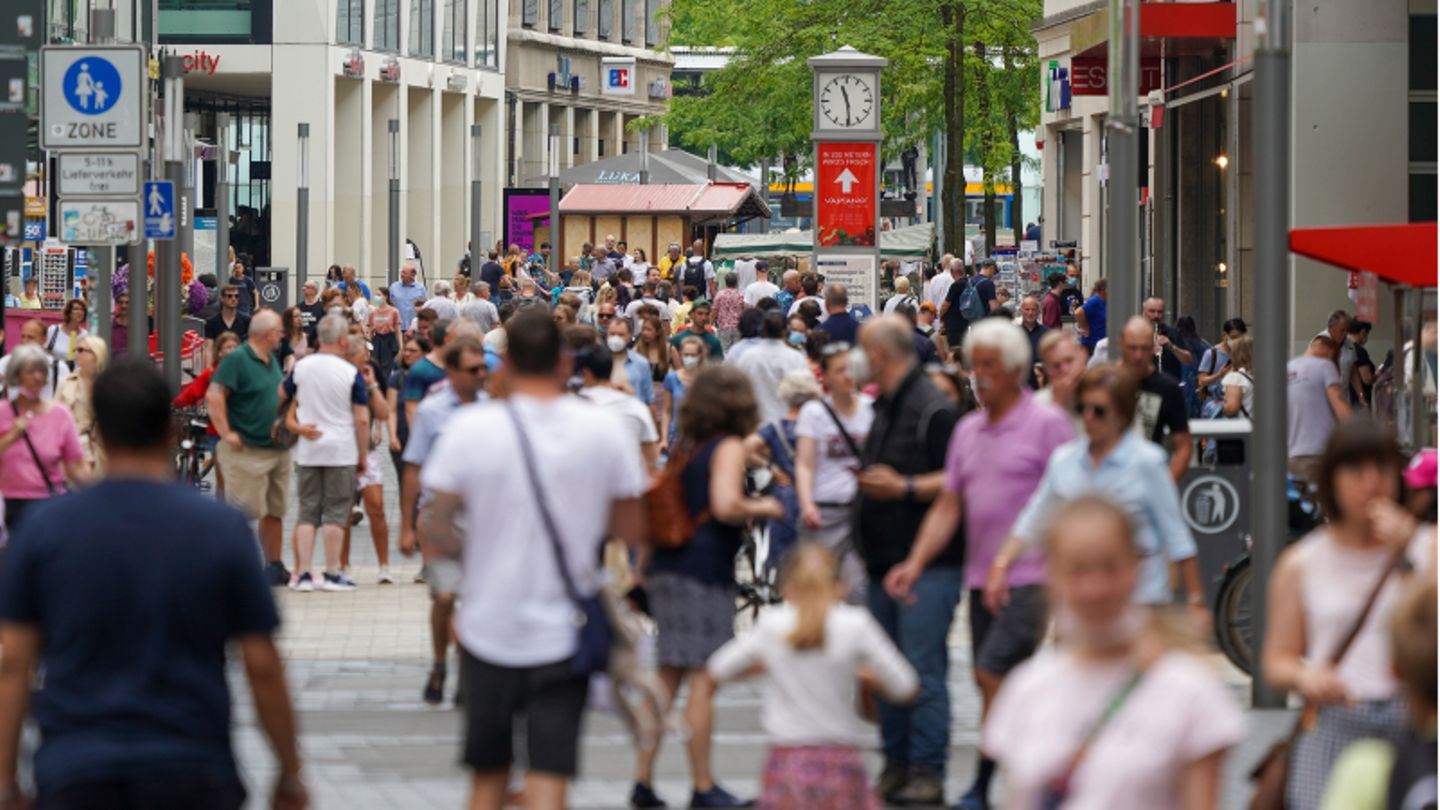Incidences are increasing – but not everywhere. While the west of Germany is struggling with the growing number of cases, things remain calm in the east. Experts explain why this is.
The fourth corona wave. The front runners in terms of incidence values are the three city-states and North Rhine-Westphalia. The state had recently torn the 100 mark and is now one of the Corona hotspots in Germany.
A few months ago it looked very different. In winter and spring, incidence values of 500 were still highest in Saxony and Thuringia. Only in May did the number of cases slowly decline and in June fell to a low that the countries had last reached in late summer 2020. The federal states of Saxony, Saxony-Anhalt and Thuringia, which in the past mainly attracted attention due to anti-corona demonstrations by lateral thinkers and a comparatively low vaccination rate, are able to maintain the low number of infections to this day. Why is that?
The virus travels with you
“The geographical distribution of the incidences corresponds to the picture we were able to see last year,” says Professor Bertram Häussler, head of the Iges research and consulting institute stern. At that time, the incidences in the east were as low as they are now, while they rose significantly in other federal states. Häussler suspects that the incidences are particularly related to the proportion of migrants in a federal state who increasingly traveled to their countries of origin for vacation. These are significantly higher in North Rhine-Westphalia, Bremen or Berlin than in Saxony or Thuringia. In the past year, especially those returning from the Balkans and Turkey, the number of infections increased. At least for returnees from the Balkan states, this is not to be expected now, since the countries control their infection processes better.
Professor Hajo Zeeb, virologist at the Leibniz Institute in Bremen, sees it similarly, but would attribute the increasing incidence not only to the migration background but also to the increased willingness to travel. “We already know from last year that the return trips from the respective countries have a measurable effect on the number of infections,” Zeeb said stern. This year a similar dynamic is developing. Häussler suspects that where the summer holidays have already ended, such as in North Rhine-Westphalia, the incidences would rise more sharply again.
Contacts promote the spread of corona
Another factor is the population density and the associated contact opportunities. This is higher in urban areas than in rural regions. But here too, according to Häussler, contact abroad plays an important role. The more contact you have with people in holiday regions and at home, the higher the likelihood that the virus will spread further in Germany.
Cities like Leipzig and Dresden have a high population density as well as a high proportion of people with a migration background. The fact that the incidences are currently only half as high there, such as in Bremen or Hamburg, may be due to the fact that the citizens there come from other countries, “such as Russia, where the incidence was not so high recently.”
Two other factors that would strongly influence the infection rate in the east are age and vaccination progress, as the experts explain. Although the eastern federal states do not shine with high vaccination rates, the average age in Saxony, Thuringia and Saxony-Anhalt, at 46 to 49 years, is slightly higher than in other federal states. “The age of onset has fallen massively since last year,” says Häussler. While the average age at that time was just under 50, this year a particularly large number of people aged 30 and over will be infected. In addition, more and more people from vulnerable groups are vaccinated – this also applies to the east, even if it is.
Nevertheless, incidences can rise again
However, the experts warn against resting on the current low incidences. “These are dynamic effects that can change quickly.” It is only a snapshot, “emphasizes Zeeb. Regional differences should therefore not be overestimated. The highly infectious Delta variant in particular could also increasingly be in the autumn and Christmas season at the latest In the eastern German federal states and especially among the unvaccinated, the fourth wave could also arrive in eastern Germany – only with a time lag.
David William is a talented author who has made a name for himself in the world of writing. He is a professional author who writes on a wide range of topics, from general interest to opinion news. David is currently working as a writer at 24 hours worlds where he brings his unique perspective and in-depth research to his articles, making them both informative and engaging.




